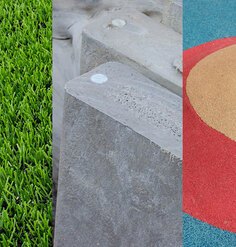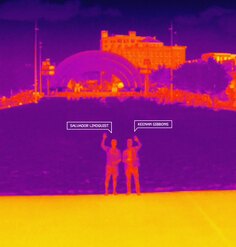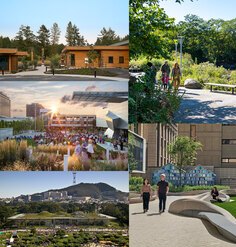From the Field: A Tale of Two Cities
By Yi Luo, Ph.D. Student in Urban and Regional Science, PLA, Texas A&M University
This summer our Case Study Investigation (CSI) research team at Texas A&M University documented the landscape performance qualities of four projects. Since two projects are in China and two are in the U.S., we call our study “A Tale of Two Cities”.
The two projects in China are Beijing Olympic Forest Park and Tangshan Nanhu Central Park. Beijing Olympic Forest Park is part of the Beijing Olympic Green and is the largest green public space that has ever been built in Beijing, while Tangshan Nanhu Central Park, located in Tangshan City in northeastern China, is a mine reclamation project that transformed a post-coal mining wasteland into urban recreational public space.
In order to collect data, I flew to Beijing to work with the design firm Beijing Tsinghua Urban Planning and Design Institute (TUPDI). While there, I introduced the Chinese designers to the Landscape Architecture Foundation, its mission, and the CSI program. I explained the outcomes and requirements for our CSI projects, showed them samples of previous studies, discussed what benefits could be measured and quantified, and assessed how to collect data within the timeline. Research Fellows Dr. Ming-Han Li and Professor Bruce Dvorak were involved through emails and conference calls. The designers in Beijing Tsinghua Urban Planning and Design Institute were very interested in the CSI program and have been highly supportive, responding to our data requests and questions very quickly. I feel fortunate to have the opportunity to work on the two China projects. The experience has been unique and invaluable.
The two projects in the U.S. are Cross Creek Ranch in Fulshear, Texas designed by SWA and Park Seventeen in Dallas, Texas designed by TBG. Cross Creek Ranch is a master-planned residential community that maintains large areas of naturalized landscapes for ecological function, wastewater treatment, and passive recreation, while Park Seventeen is a roof garden over a six floor parking garage providing both a visual and physical amenity for residents and office tenants. From these two projects, I not only obtained deeper knowledge about ecological planning and roof gardens, but also learned new research methods, including soil and water sampling procedures, UHI mitigation measurement, and stormwater calculations. In addition, by engaging first-year MLA students in part of our onsite data collection process, I learned skills for combining research with class teaching.
I am very honored to be able to work on CSI projects, and this experience has been very rewarding and precious for my future teaching and research career.
Professors Ming-Han Li and Bruce Dvorak and student Research Assistants Yi Luo are participating in LAF’s 2012 Case Study Investigation (CSI) program and working to quantify the landscape performance benefits at four project sites in Texas and China. Any opinions expressed in this article belong solely to the author. Their inclusion in this article does not reflect endorsement by LAF.














